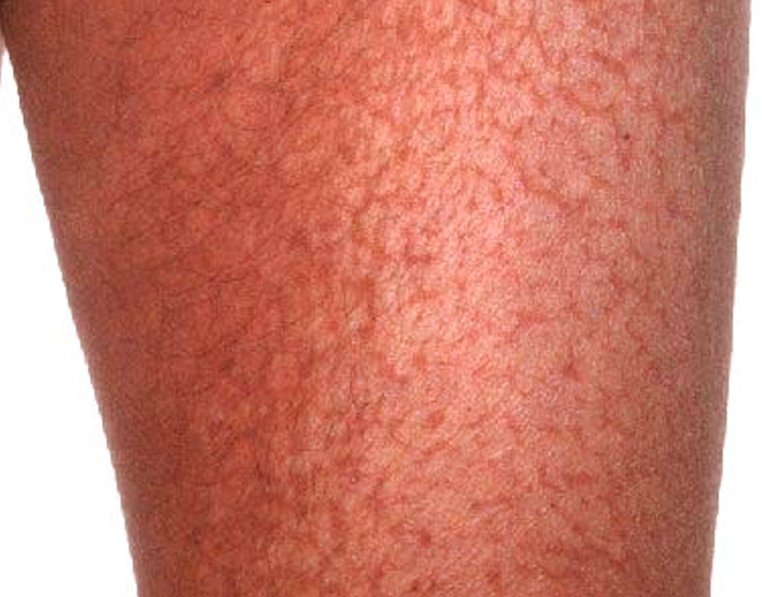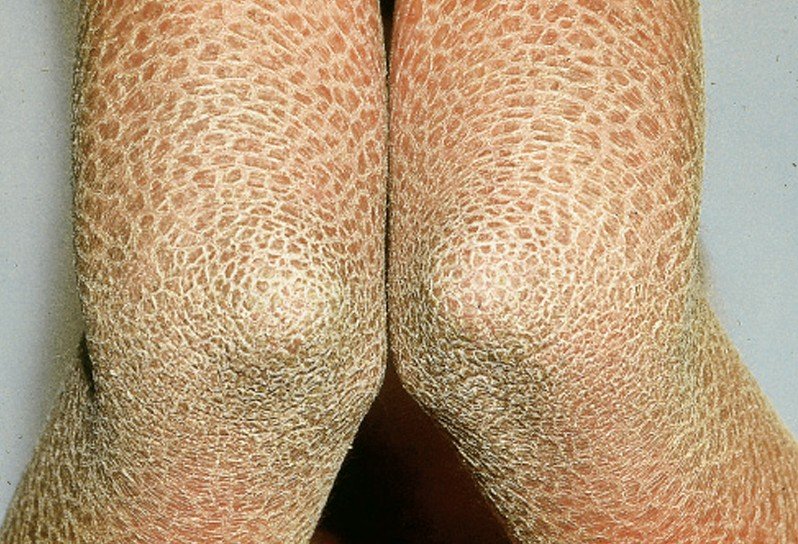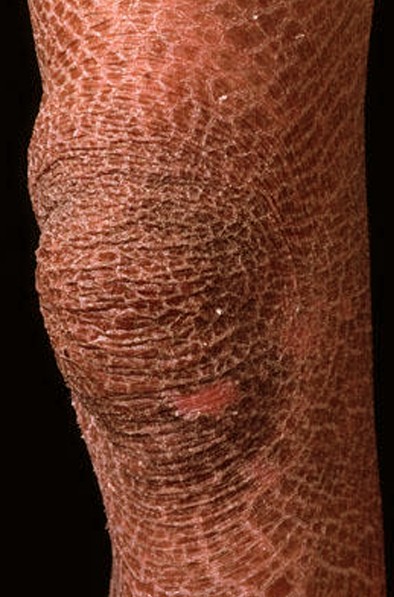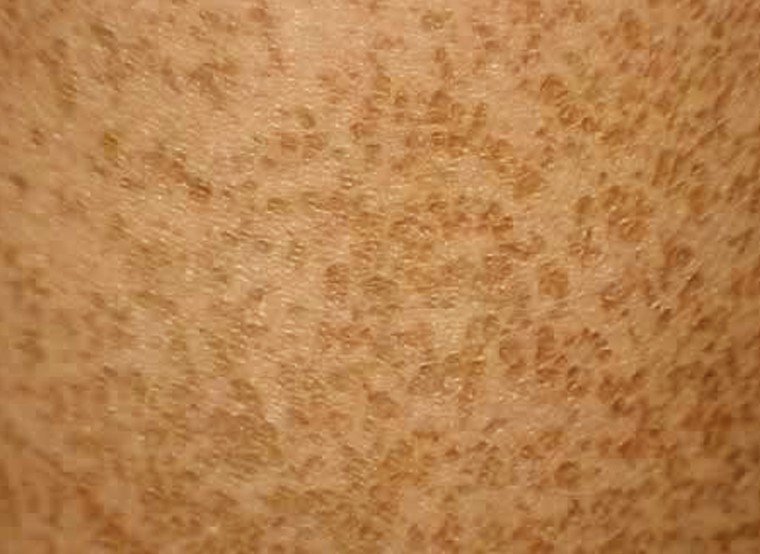Ichthyosis
Last reviewed by Dr. Raj MD on January 12th, 2022.
What is Ichthyosis?
This is a skin disorder. In ancient Greek “ichthys” means “fish.” There are several different forms of ichthyosis with each one presenting itself in a different fashion.
Types of Ichthyosis
These types include:
Ichthyosis vulgaris
This is a skin disorder that causes dry scaly skin and is the most common form of ichthyosis. This type affects around one in two hundred fifty people. This type accounts for ninety-five percent of the cases of ichthyosis. This type appears on your legs and trunk and usually occurs at puberty.
Lamellar ichthyosis
This is an extremely rare skin disease that is inherited and affects approximately one in six hundred thousand people. It is present at birth throughout your life. The baby is born with a mucus membrane that is over their skin which the entire body sheds.
Epidermolytic hyperkeratosis
This is a skin disorder that is present at birth with the baby possibly having severe blisters and very red moist skin. It is rare and affects approximately one in two hundred fifty thousand people.
X-linked ichthyosis
This is a hereditary skin condition that is caused by the deficiency of the steroid sulfatase enzyme that affects approximately one in two thousand to six thousand males. It is found on the extremities and trunk.
Congenital ichthyosiform erythroderma
This is also a rare type of skin disease in the ichthyosis family and occurs in approximately one in two hundred thousand to three hundred thousand births. This is the mildest form that has mild scaling at birth on into their adulthood.
There is one form of this skin disease that does not appear to be genetic, which is referred to as ichthyosis acquista. It is also known as acquired ichthyosis. It is usually a sign of some other disease such as a malignancy, typhoid fever, or Hodgkin’s disease.
Normally your body will continuously renew its skin surface by allowing the older skin cells to be shed from the skin surface and building new skin cells. When a person has this skin disorder, the balance of this system is disrupted. When this happens your skin cells will accumulate into thick flacks that stick to the body. They can resemble fish scales. It is not a contagious disease but it can interfere with your skins role in regulating your body’s temperature, protecting your body against infection, and helping to prevent dehydration.
Ichthyosis Symptoms
What symptoms a person will have depends on what is causing ichthyosis and they type that you have. Your skin could show different patterns of flaking. For generic types of ichthyosis the symptoms will either appear during childhood or be present at birth. These symptoms can include:
- Severe dryness of your skin with flaking and thickening. This can involve your whole skin surface or in limited areas.
- Itching of your skin that is mild.
- Body odor because the spaces between and under your skin flakes can harbor a collection of fungus or bacteria.
- Hearing difficulties because of the buildup of way in your ears.
In the winter time and dry climates the symptoms will usually be worse. This is because the humidity and warmth will help to improve the symptoms. When a person has ichthyosis vulgaris they may also have allergic problems like asthma, eczema, or allergic nasal congestion.
Ichthyosis Causes
The main cause of developing any type of ichthyosis is that the balance of old and new skin cells have been disrupted for one of two reasons. One reason is that there are too many replacement skin cells being produced. The second reason is that when it is time for the old skin cells to drop off of your skin’s surface they do not separate well from the surface of your skin.
When a person has ichthyosis it is actually not one disease but a group of disorders in which there is an accumulation of epidermal cells that give your body the appearance of having scales. It can be considered a genetic skin condition which means it is inherited or it can occur later in life.
In most of the cases of ichthyosis it happens because of one or more genetic mutations, which makes it a skin disorder that will last a lifetime. If ichthyosis is associated with another medical condition it could go away when the medical condition is taken care of.
Ichthyosis Treatment
There is no cure for this skin disorder. Treating ichthyosis dermatologists prefer to use a non-invasive form of treatment. This is why when treating any type of ichthyosis the main treatment involves restoring the moisture to your skin and helping to facilitate a more aggressive way to shed the dead skin cells.
If you have severe symptoms you will need to make regular visits to your dermatologist. To help keep your skin moisturized you need to use moisture-retaining ointments or creams after bathing. This is to make sure that the moisture is left on the surface of your skin. Some of these ointments or creams would be the ones that contain urea, lanolin, or petrolatum.
You may need medications that help to start the shedding of the skin flakes such as creams or lotions that contain alpha-hydroxy acids such as lactic acid. If it causes body odor or itching that makes you want to scratch your skin that could cause a skin infection you may need to take antibiotics periodically.
Your dermatologist may suggest that you use retinoid cream which is derived from vitamin A for some of the types. This type of cream can help to slow down the regeneration of your skin. It is not known if exposure to the sun will worsen or improve your condition.





